
Last week's Friday Night Video The Seaside featured some of the UK's best sea cliff climbing, produced by filmmaker Mike Cheque. Theo Moore interviews Mike about the process...
Mike Cheque is a filmmaker and photographer based in Sheffield. His first major release Stonnis focussed on regular climbers at Black Rocks and featured some memorable footage including Mark Rankine's ground-up ascent of Gaia (E8 6c). Mike's most recent film The Seaside focusses again on regular climbers but this time out on the UK's sea cliffs. Early in 2018 Mike suffered a serious climbing accident after falling 25 metres. Whilst he's lucky to be alive, and thankfully making a fast and full recovery, he's still just as psyched about his filmmaking as ever. In this interview he gives us the lowdown on The Seaside and what he thinks makes a good climbing film.
Why did you want to make climbing films rather than go climbing?
I just feel like it's a better use of my time - if I just go climbing it's ultimately only me that benefits but lots of people get enjoyment from the time I put into making films. I was involved solely in music for a long time before I started climbing properly and as a result I have a lot more confidence in myself creatively than I do as a climber. I think having an element of an outsider's view of the climbing world gives me a clearer perspective of how to present it too.
I do love to climb though. I tend to have periods when I focus solely on making a great film, then a period when I'll just climb as much as possible and try to surpass my previous standards. Trying to do both at once just leads to disappointment!
Your first major climbing film Stonnis centred on Black Rocks - not the most famous crag in the Peak - and now you've just finished The Seaside. Each of these places has an identifiable character but British sea cliffs is a lot larger both geographically and in terms of complexity. Is there a common thread and why did you want to make a film about sea cliffs?
There were two sides to why I wanted to make a film about Black Rocks; I was in love with the place and I thought there was a lot to show about it that had never been seen. It was also the easiest crag for me to get to!
The unexpected success of Stonnis led me to abandon all practical considerations for the follow-up - I just thought there was so much scope for an original, entertaining film about British sea cliffs that I didn't care how hard it would be to make. In fact the difficulty of filming partly attracted me 'cos I knew there were so many awkward-to-access crags that no one had filmed at.
The day you filmed Andy on Pleasure Dome you drove all the way from Sheffield to Pembroke for the day. That's at least a 10 hour round trip. Why was all that driving worth a bit of footage that may not have made it in to the film?
In that case it was, I shot two routes that made it into the film, which is more than I can say for some of the day trips I made!
It seems crazy to me now but that was just the mentality I got into to make the film - shoot at all costs, work around the climbers to get the genuine footage, get something filmed every weekend. I never knew when or where I'd be going until Thursday night most weeks and I got home a few hours before I needed to get up to go to work on quite a few occasions!
I spent all the summer worrying that I didn't have enough good footage and that I hadn't filmed in enough areas. When the autumn came and I started editing I realised that the opposite was in fact true...
Filming on sea cliffs must have some additional logistical challenges. What was it like dealing with them?
It was frequently scary. I used Gogarth Main Cliff as my test location as I thought that if I could get my act together on there then all other crags would be easy. I thought I knew what I was doing but on my first proper attempt I got a total shock - carrying all my gear to the top absolutely wasted me, all the distances I'd estimated were further than I thought and I ended up hanging off the top pitch of Dinosaur terrified and spinning in space with no rope left. I'd already spent the bit of money that the BMC gave me towards making the film at that point so I just had to embrace the fact that I had to do a lot of hard work to get to the point where I could shoot the thing.
Another challenge was due to how spontaneous I had to be in order to film at crags that I'd literally just arrived at. Quite often I'd only find the best place to film from after the climber had topped out or I'd end up shooting from a very precarious position wishing I was tied in but not being able to sort it out without losing the shot. But it was all worth it - every route in the film is filmed "for real" in one take and all but two are onsight attempts. The feeling you get from shooting like that is worth the effort, even when the results aren't technically perfect.
When we first met it was because Wil suggested we go to Black Rocks as his friend was making a climbing film. I imagined some guy filming stuff on his phone, maybe a handheld camera if we were lucky. When we arrived I was amazed to see two booms on top of Black Rocks - it was a pretty professional operation! However, you're not a professional filmmaker and you don't have a background in making films. How and why did you get in to it?
I was heavily into films when I first started climbing - I didn't know many climbers, didn't have my own transport and I was at a difficult point in my life in general so watching DVDs was a big thing for me at that stage where you just can't get enough climbing and need a constant fix.
Films like Hard Grit, Stone Monkey, On Sight and Committed massively influenced me both in terms of wanting to climb but also in wanting to create something that could influence other people to the same extent. I had the confidence and the technical and creative background from making music, but it took me years to gradually get the gear and the knowledge together to do it successfully.
There are loads of climbing films out there, from phone to helicopter footage. What do you think makes a good climbing film?
I think it comes down to just two things - do you think the climber's going to succeed and do you care if they do or not? There's amazing potential for suspense in climbing films - we're literally dealing with people clinging onto cliffs by their fingertips - and it's surprising how often the opportunity's missed. Far too many films are about a single route that you already know the protagonist succeeded on. In a surprising amount of films the climber is an almost anonymous figure too. If we know nothing about them as a person we're not going to be bothered if they get to the top or not.
Chris Doyle and Guy van Greuning are good examples of filmmakers who really understand this. They're not trying to make films that will win awards but a lot of their stuff is not only more authentic but also more involving than some of the films that do - you feel like you know the climbers they're showing you almost immediately and as a result, once things are in doubt on the rock you're totally rooting for them.
You focus a lot on sound, both of the climbers and of the place, and you have included interviews as a central part of each of your films. What makes these things special?
You've got two senses to work with when you make a film so it makes no sense to only bother with one!
A lot of modern climbing films are absolutely beautiful visually but their only sound's just music, often quite generic royalty-free music. The effect can be more like an infomercial than a reflection of what it's like to go climbing.
What excites me is creating the opposite of that - something you can make a visceral connection with. As soon as you can hear the climber, even just their breathing, you're connected to them in a way that's far beyond just looking at them. With the sound of the environment too you've got a connection to where they are that goes way beyond just a picture. Filming on the sea cliffs - that's on a plate for you really; the waves, the birds, the echoey zawns - it'd be such a waste to film there and only capture the visual side of the experience.
One of my favourite aspects of your films is the characters who are in fact real, ordinary climbers. Are there are certain identifiable aspects of a person which you like to focus on or does these just come out in the process?
I don't really select people based on their personalities - I just film anyone who's up for it basically. I think the nature of rock climbing means we're all quite "special" people who are entertaining in some way so I never worry about that. My biggest concern is usually whether they're on a suitable route - I've never cut a section from a film because the climber isn't interesting enough in the interview but I have because they've just cruised the climbing without anything remarkable happening.
Having said that though, I think there's a misconception that the only climbs worth filming are the really difficult ones and that, by extension, the most accomplished climbers are the most interesting. It's not true in my opinion, sometimes it's the opposite - when you've got a "normal climber" onscreen there's that element of being able to relate to them but conversely there's an excitement in them being totally unknown to you. You don't get that if your film only features the familiar sponsored wads!
Watch The Seaside below:
- REVIEW: Troll Astro Bouldering Pad 26 Jul, 2022
- REVIEW: Black Diamond Mission XP and Technician Leather Approach Shoes 8 Jul, 2022
- REVIEW: Scarpa Mago 14 Apr, 2022
- REVIEW: Mountain Equipment Trango 22 Mar, 2022
- REVIEW: Ocun Nitro 18 Mar, 2022
- REVIEW: 3RD ROCK x Taylor Made Portable Hangboard 13 Dec, 2021
- REVIEW: 3RD ROCK Jeans - Fitz and Mercury 3 Dec, 2021
- GROUP TEST: La Sportiva Solution Comp 28 Oct, 2021
- REVIEW: Wild Country Mosquito Harness 5 Oct, 2021
- REVIEW: Mammut Climbax Review 1 Oct, 2021

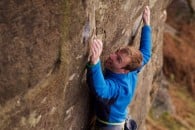

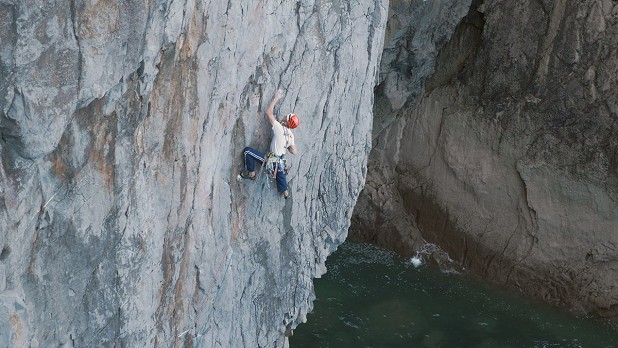
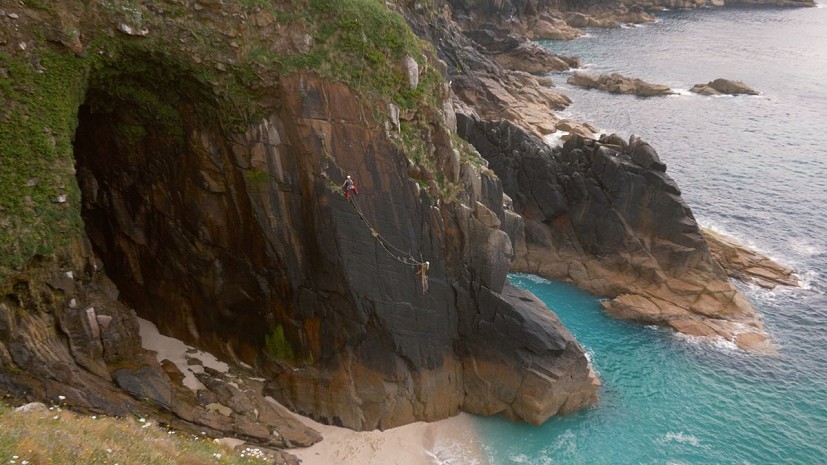
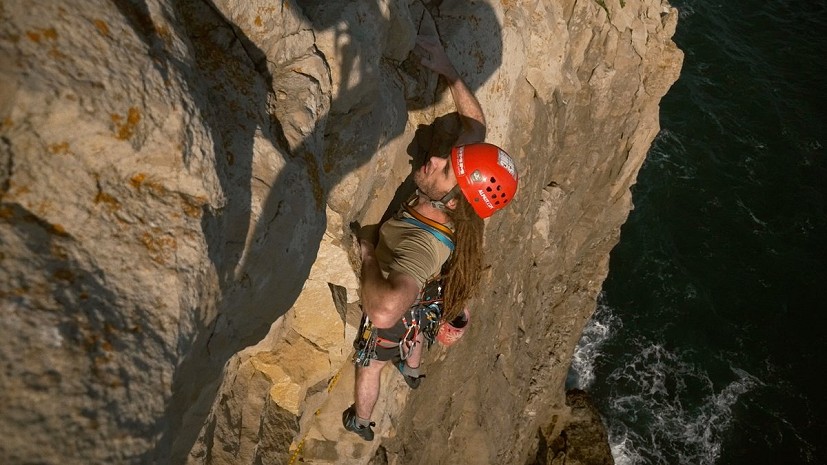
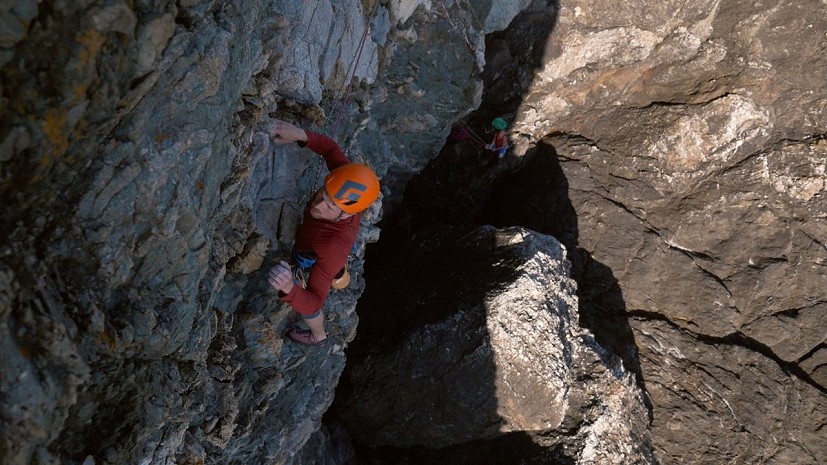


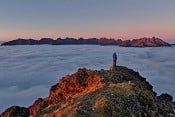




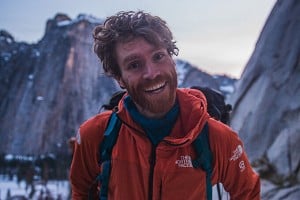
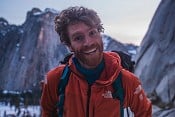


Comments
It was great seeing the film at the premiere, there being a neat symmetry between the inherent madness of sea cliff climbing (especially the looser, more poorly protected stuff) and Mike's project to document and film it almost single-handedly. Glorious madness, mind you.
Nice to see GvG getting name-checked along with Doyle for their film-making prowess too. West Coast Gimps and The Gritual are classics.
Lovely interview. Many thanks indeed. (And many thanks for 'the filim', as folk used to say in Ireland.)
Totally agree. Sometimes you're willing them on, so, so much - as if that can somehow make a difference! The grade doesn't matter. Nothing really matters but wanting them to succeed.
Life enhancing, I guess...
Mick